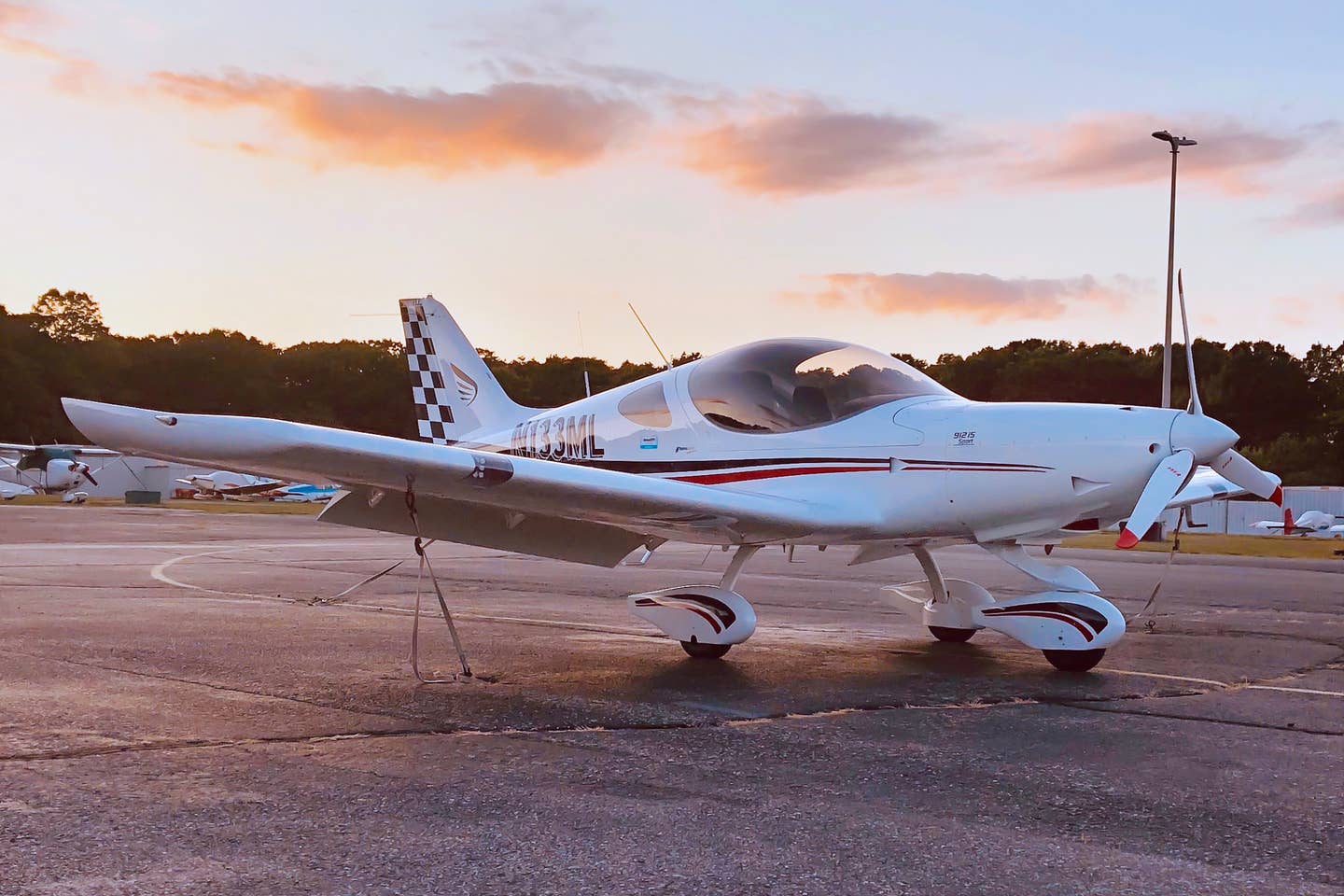
Mid Island Air Service on New York’s Long Island has found success training new sport pilots in modern BRM Aero Bristell LSAs. [Courtesy: MIAS]
We all know many people who express an interest in learning to fly, but when they finally decide to walk into a flight school that only teaches private pilot and above, the sticker shock of earning a private pilot certificate can often scare them right back into the parking lot.
It is this high cost of admission to the sky that has propelled Long Island’s Mid Island Air Service (MIAS) to find success training new sport pilot students in modern light-sport airplanes. Because of the lower cost and shortened FAA flight time requirements for a sport pilot certificate, prospective student pilots can stretch a smaller budget to achieve their dream to fly.
MIAS has been around since 1946 when Lou Mancuso Sr. (the grandfather to MIAS’s current President, Michael Mancuso) started training pilots in Deer Park, New York. Michael, a corporate jet pilot when the FAA introduced the LSA rule, said to his father, “Dad, LSA is going to be the next big thing.”
They immediately began researching LSA models, and over the years have offered Remos, Tecnam, and SportCruisers, before finding the BRM Aero Bristell currently on their flight line.
Today, MIAS is busy training new sport pilots, many who finish that training and eventually add on more complex ratings and certificates. FLYING spoke with MIAS’s chief flight instructor and general manager, Evan Damadeo, to take a realistic deep dive into exactly what it takes to earn a sport pilot certificate in terms of cost and time commitment. A graduate of Embry-Riddle Aeronautical University, Damadeo has been a CFI since 2009 and is proud that MAIS maintains a 95-percent-or-higher first-attempt pass rate with the FAA.
Taking the First Steps to the Sky
Damadeo said every student interested in sport pilot training with MIAS first goes through a one-on-one FaceTime or Zoom call to discuss everything. The school strives to be transparent right from the start.
“We use this opportunity to gauge the interest of the student both for their long- and short-term aviation goals,” Damadeo said. “At our school, we care more about the safety of the industry and our students as a whole rather than trying to be a pilot mill. We believe in demonstrating our commitment both financially and personally to helping our students achieve their dream of flying.
“For many of our students who start with sport pilot, cost is a factor in their initial decision.”
The Flight Training Budget
According to Damadeo, the average price in the U.S. to earn a private pilot ticket is about $22,000 when a student finishes at the lower end of the FAA national average of 65 hours flight time. MIAS sport pilot students can complete the training for about $10,000 less.
“The cost of training for 20 hours of flight time, 15 hours of dual flight instruction, our enrollment, and about 15 hours of ground knowledge training to obtain a [sport pilot certificate] comes to $5,949.99 with MAIS,” Damadeo said. “The check ride is an additional $800 plus rental of the airplane for another two hours bringing the total to $7,041.99.
“These prices do fluctuate slightly with fuel and review of everyday costs,” he said. “We see our average sport pilot student complete in about 40 hours total time with us, and end up licensed for about $12,000.”
Damadeo added that MIAS recommends their students attend some kind of training (ground, simulator, or flight) at least three times a week to make sure they are continuously moving through the program and minimize the chance for regression.
The Right Airplane on the Flight Line
All flight schools experience some degree of student “washouts,” Damadeo said, with older learners usually citing “life or family issues” as the reason they quit, and younger students pointing to lack of adequate funding. MIAS tries to mitigate this by offering their current fleet of BRM Aero Bristell LSAs, which keeps students interested longer. The airplanes not only train sport pilots, but as a Part 141 flight school, MIAS also uses them in the school’s private and commercial pilot training programs.
“All of our planes are equipped with Rotax 912ULS/IS engines burning anywhere between 4-5 gallons per hour, Garmin G3X avionics, and Dual Axis autopilots,” Damadeo said. “This allows the Bristell to count as a technically advanced aircraft (TAA) so our sport pilot students are training in the most advanced aircraft possible.”
There is, however, another big reason MIAS is able to minimize washouts.
“I believe that using modern LSA airplanes with glass panels and more technology goes a long way to keeping younger flight students interested and helps to prevent washouts,” Damadeo said. “Our Bristells are much simpler aircraft to understand and to fly. We generally have to prevent our customers who might have thousands of hours in Cessna and Piper legacy airplanes from trying to over-control the aircraft because you need such little control pressures.”
While sport pilot might not be a perfect fit for every flight student, it makes perfect sense for someone looking for a more affordable ticket to the sky. As long as a student has not failed an FAA medical or has a reason that would prevent them from obtaining a third class medical, they can fly a modern LSA using only their driver’s license as proof of acceptable health. Couple that with the significantly lower cost and necessary training hours compared to going straight for a private pilot certificate, and flight schools like Mid Island Air Service are finding success when they offer modern light sport airplanes on their flight lines.

Sign-up for newsletters & special offers!
Get the latest FLYING stories & special offers delivered directly to your inbox






